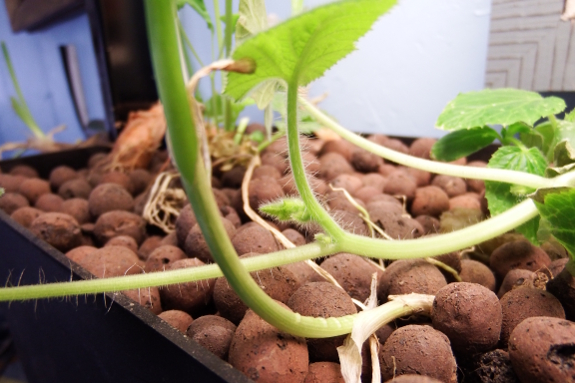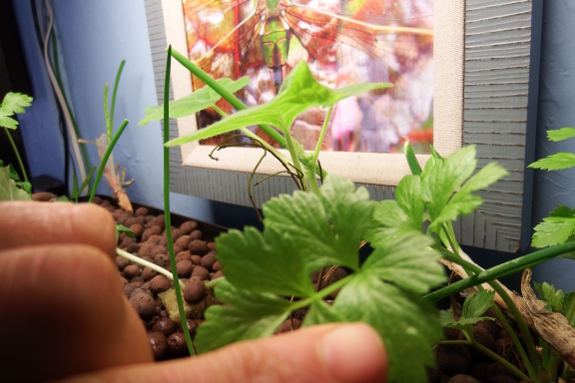
Aquaponic fish dieoff

I'm ashamed to say that
my fish started ailing right about
the same time as Artemesia and my reaction was, "I can't deal with sick
fish right now." Predictably, not dealing meant they all kicked the
bucket, then rotted within the tank (I really didn't want to deal with
them) and fed the plants for a while that way.
Now that the water's
cleared back up, it's time to figure out what I did wrong and get back
on track. I suspected the issue was pH since that was the one part of
the water chemistry that was still swinging pretty widely before I
introduced the fish. Sure enough, upon testing, I found the nitrogen
had all been eaten up but the pH was a far-too-sweet 8.0.

It's possible the high
pH is just a remnant of the cycling
process not quite being complete. In the past, I'd lowered pH with
lemon juice, but Aquaponic Gardening suggests citric acid (the
acid in lemon juice) is a bad choice since it kills the good bacteria
in my grow bed.
This time, I just did a partial water change (15%) using rain-barrel
water (pH 6.5), which brought the overall tank water down very
slightly. Then I used two tablespoons of vinegar to bring me back to
neutral (7.0) pH. Here's hoping the pH stays a bit steadier over the
next few days so I'll feel comfortable adding back in fish....
Want more in-depth information? Browse through our books.
Or explore more posts by date or by subject.
About us: Anna Hess and Mark Hamilton spent over a decade living self-sufficiently in the mountains of Virginia before moving north to start over from scratch in the foothills of Ohio. They've experimented with permaculture, no-till gardening, trailersteading, home-based microbusinesses and much more, writing about their adventures in both blogs and books.
Want to be notified when new comments are posted on this page? Click on the RSS button after you add a comment to subscribe to the comment feed, or simply check the box beside "email replies to me" while writing your comment.

The problem with adjusting the tank with acids such as vinegar or lemon juice or bases such as baking soda is that they are transient fixes and will result in more wild swings in the long run. You want longer term buffers that will decrease the likelyhood of swings. there are chemical buffers that claim to do this, but I prefer more organic solutions, crushed coral/sea shells to bring the pH up. A small mesh bag of peat moss or a piece of driftwood or oak leaves/indian almond leaves, to bring the pH down. Of course both of those work much slower so the result will likely take a week to fully show up and the acidifiers will brown the water. Brown water is very good for fish. There is even a chemical in indian almond leaves that appears to help treat mild finrot in fish.
Anyhow as long as you are adding straight acids or bases to pH your water you are not addressing the source of the pH problem and the pH will not be stable so your fish will be sick.